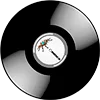
All about hardcore: history, subgenres, artists, and the major festivals. From gabber to uptempo — rhythm on the edge of madness.
Hardcore — an extreme form of electronic music that tears up the dancefloor with sheer speed, aggression, and power. The genre emerged on the 1990s rave scene and has since become a symbol of absolute freedom, anarchy, and energy.
History of Hardcore
-
Early 1990s — origins in the Netherlands, Belgium, and Germany
First tracks push 160+ BPM, drum machines, distorted kicks -
Dutch Hardcore (Gabber) — Rotterdam, 1992–1996: Mokum Records, Paul Elstak, Rotterdam Terror Corps
-
Happy Hardcore — a UK branch with melodies and vocals
-
Industrial Hardcore — fused with noise and techno (The Outside Agency)
-
2000s — popularized by festivals: Thunderdome, Masters of Hardcore
-
2020s — the old-school hardcore revival; crossover with hard techno and EDM
Characteristics
-
BPM: 160 to 220+
-
Pounding distorted kick drum
-
Dark synths, industrial-style effects
-
Frequent use of samples from films, news, and protests
-
Atmosphere: harsh, intense, heavy
-
Depending on the subgenre: from anthemic melodies and vocals to total sonic chaos
Hardcore Subgenres
| Subgenre | Traits |
|---|---|
| Gabber | Dutch style, hard-hitting beats, aggressive feel |
| Happy Hardcore | Fast tempo + melodies, often female vocals |
| Hardstyle | Techno-leaning sound with powerful kicks |
| Industrial Hardcore | Dark, brutal, noise-and-techno approach |
| Terrorcore | 220–300 BPM, extremely harsh sound |
| Frenchcore | Very fast + melodic (Radium, Dr. Peacock) |
| Speedcore / Splittercore | Total insanity: up to 600–1000 BPM |
| Mainstream Hardcore | More commercial approach with vocals and big drops |
| Uptempo Hardcore | Ultra-fast, dense groove; highly popular in the 2020s |
Notable Artists
-
Angerfist — a mainstream hardcore legend
-
Paul Elstak — one of the scene’s founding figures
-
Dr. Peacock — the king of Frenchcore
-
Tha Playah, Nosferatu, Neophyte, Evil Activities
-
Promo — hardcore with a philosophical streak
-
Miss K8 — the scene’s most famous female DJ
-
Radium, Sefa, Outblast, Drokz — veterans and headliners
Fun Facts
-
Thunderdome — the flagship hardcore festival since 1992
-
Style and culture matter — from bomber jackets and balaclavas to the iconic hardcore smiley
-
The scene is widely documented in films, comics, and animation
-
The hardcore community resists commercialization and stays proudly underground
-
The Netherlands is often called the world capital of Hardcore
Where to Listen and Watch
-
Spotify: playlists “This Is Angerfist,” “Hardcore Bangers,” “Masters of Hardcore”
-
YouTube: Masters of Hardcore, Thunderdome, Hardtunes
-
Bandcamp: Industrial Strength Records, PRSPCT, Hardcore France
-
Festivals: Defqon.1, Dominator, Masters of Hardcore, Q-Base, Ground Zero
Conclusion
Hardcore is pure energy in sound: breakneck speed and uncompromising freedom of expression. It was born on rave floors where people craved not just music, but an emotional detonation — a way to step beyond familiar rhythms and rules. Since then, hardcore has grown into a global subculture with its own aesthetics, code, and identity.
Today the genre keeps evolving: from old-school gabber to the uptempo wave of the 2020s, from melodic Frenchcore setups to chaotic Speedcore. But at its core, one thing remains: the massive kick, the relentless drive, and that catharsis that makes the crowd jump as one.
Hardcore doesn’t try to be comfortable. It follows instinct, not trends. And as long as there are people who need an extreme rhythm that shatters the limits of body and mind, Hardcore will live — loud, fast, and relentless.

